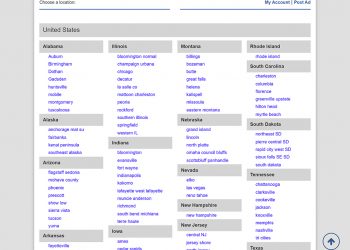After reviewing millions of resumes and consulting with thousands of hiring managers, Novorésumé has discovered that the way you format your CV can be just as crucial as the content itself. Many professionals put all their focus on the details they include but overlook the importance of how those details are presented. That simple design choice often determines whether your application stands out or ends up unnoticed.
This proves to be a costly mistake.
Think of your CV format as the blueprint for your professional story. It shapes how recruiters navigate your information, determines if your strengths are clear at a glance, and influences whether your qualifications make an impact in those crucial first few seconds. A smart format isn’t about making your CV look stylish—it’s about presenting your achievements strategically. The wrong format can hide your best qualities, call attention to weaker areas, or even get your resume filtered out by Applicant Tracking Systems before anyone gets the chance to read it.
In this guide, you’ll find a clear breakdown of the three main professional CV formats, insights on how to select the right one for your situation, and step-by-step advice to help you craft a CV that stands out in 2025.
Why Your CV Format Is a Strategic Decision
A CV format serves three vital purposes:
Enhances Readability for Humans: Recruiters face a flood of applications, so they tend to scan rather than read CVs. A clean, well-organized format with clear headings and ample white space helps them quickly spot your most recent roles, skills, and key achievements. If important details are hard to find, they move on fast.
1. Ensures Compatibility with ATS: Over 98% of Fortune 500 companies use Applicant Tracking Systems to screen candidates. These algorithms scan for keywords and data in a specific order. Non-standard formats or complex designs can confuse ATS, causing your CV to be misread or rejected before a human even sees it.
2. Tells Your Professional Story: Your chosen format frames your career narrative clearly and strategically. Whether you’re a specialist, career changer, or experienced leader, the right layout presents your most relevant experience upfront. A poor format is like telling a story out of order—the key message gets lost, and interest fades.
Getting your CV format right is a crucial step toward making a strong first impression and advancing in today’s competitive job market.
The Three Core CV Formats: A Strategic Breakdown
There are three main CV formats commonly used by professionals today, each tailored to different career situations and goals:
1. Reverse-Chronological Format: This is the most widely recognized and preferred style among recruiters. It organizes your work experience starting with your current or most recent role and lists previous positions backward in time. This method highlights your career progression clearly and logically, making it easy for employers to see your development and growth over time.
This format is especially suitable for candidates with a steady career path who want to showcase continuous professional advancement. It allows you to prominently feature your latest achievements and responsibilities while still providing a comprehensive view of your career history.
Key benefits include:
- Recruiter Familiarity: Hiring managers are accustomed to this layout, which aligns with their natural reading pattern—starting with the most recent experience.
- ATS-Friendly: Applicant Tracking Systems, commonly used by employers to filter resumes, prefer the clear, linear structure of the reverse-chronological format, reducing the risk of your CV being discarded.
- Career Storytelling: By starting from the present and moving backward, it tells a coherent story of your professional journey, highlighting stability and growth.
- Ease of Customization: You can tailor the emphasis on roles and skills to suit the job you’re applying for, by adjusting the description and order of listed experiences.
Overall, the reverse-chronological CV offers a compelling and trustworthy narrative that appeals to both humans and digital screening tools.
2. Functional or Skills-Based Format: This format highlights your skills and qualifications rather than focusing on a chronological work history. Instead of listing jobs by date, it groups your abilities and achievements into categories, making your competencies the main focus.
This format is especially useful in certain situations:
- Career changers who want to emphasize transferable skills over unrelated job titles.
- Recent graduates who lack extensive work experience but have relevant skills to showcase.
- Candidates with employment gaps or a non-linear work history, as it downplays gaps and short-term jobs.
- Freelancers or those with diverse project-based work, allowing you to spotlight skillsets rather than fragmented job roles.
However, there are some drawbacks:
- Employers may be suspicious of functional resumes, thinking you might be hiding gaps or lack of experience.
- It tends to be less compatible with ATS software, which often scans for chronological job data and can misinterpret skills-based layouts.
- Some recruiters prefer traditional formats for clarity and may find functional CVs harder to quickly evaluate.
- It can lack context on career progression, making it tricky for employers to understand your professional journey.
In summary, while the functional format can be powerful in the right context, it’s important to weigh its pros and cons carefully and consider your unique situation before using it.
3. Combination or Hybrid Format: This format merges the best of both worlds: it begins with a detailed skills section that highlights your core competencies and achievements followed by a reverse-chronological listing of your work history. This layout is ideal for professionals who want to showcase both the breadth of their skills and the progression of their career in a clear, organized way.
Key benefits include:
- Spotlights Your Strengths: The skills section at the top draws immediate attention to your most relevant abilities and accomplishments. This is especially useful if your job titles alone don’t fully reflect what you bring to the table.
- Tells a Clear Career Story: By following the skills section with a chronological account of your work experience, it allows employers to see your career journey, highlighting stability and growth alongside your skillset.
- ATS-Friendly: When formatted cleanly, combination CVs work well with Applicant Tracking Systems, because they include both keyword-rich skills and clear job timelines.
- Versatile for Diverse Backgrounds: This format serves well if you’re changing careers, re-entering the workforce, or have a varied job history covering different roles or industries.
However, it requires careful organization to avoid a cluttered look. It’s also less suitable for those with minimal professional experience, where a simpler functional format might be better.
Grasping the pros and cons of each CV format empowers you to choose the most effective way to showcase your qualifications and maximize your chances during your job hunt. Selecting the right format allows you to strategically highlight your strengths and present your experience in a clear, compelling manner.
How to Build Your Perfect CV Format in 5 Steps
Step 1 – Choose Your Strategic Format: Based on the detailed overview of CV formats, pick the one that best highlights your unique career story and strengths. If you’re unsure which format to use, the reverse-chronological format is a safe and effective default choice, as it is widely accepted by recruiters and optimized for ATS systems.
Step 2—Perfect the Layout:
- Getting your CV layout right is crucial, as it affects readability and overall impression. Keep it concise: aim for one page if you have under 10 years of experience; senior professionals can go up to two pages, but avoid going beyond that.
- Use 1-inch margins on all sides to create balanced white space, which prevents the page from feeling cramped. Choose a clean, professional font like Ubuntu, Overpass, or Calibri, sized 11-12 points for body text and 14-16 points for headings, so the text is easy to read. Line spacing between 1.0 to 1.15 also enhances readability without wasting space.
- Clear section headings and consistent formatting help recruiters and ATS quickly find the information they need. A tidy, well-structured CV signals professionalism and consideration for the reader, improving your chances of making a strong impression.
Step 3 – Include Essential and Optional Sections: Make sure your CV includes the key sections every recruiter expects: your contact information, detailed work experience, a clear skills list, and education history. Beyond these essentials, you can boost your CV’s impact by adding optional sections like Projects, Certifications, Languages, or Volunteer Work—but only if they’re relevant and help make your candidacy stronger and more compelling
Step 4 – To make your resume ATS-friendly, focus on the following key points:
- Use standard section titles: Stick to familiar headings like “Work Experience,” “Skills,” “Education,” and “Certifications.” Avoid creative titles that might confuse ATS scanners.
- Avoid images, tables, and columns: Keep the layout simple with a single-column format and plain text. Graphics, icons, or complex formatting can hinder ATS parsing.
- Use clear, simple bullet points: Highlight achievements and responsibilities concisely. Start each bullet with strong action verbs and integrate relevant keywords from the job description naturally.
- Incorporate keywords: Identify keywords and phrases from the job listing, then weave them into your skills, experience, and summary sections. Use both full-form terms and acronyms (e.g., “Enterprise Resource Planning (ERP)”) for broader match.
- Consistent formatting for dates: Use a uniform date format throughout your resume, such as “MM/YYYY – MM/YYYY,” to ensure ATS systems can accurately interpret your employment timeline.
- File as a .doc or PDF: Save your resume in formats that ATS systems easily parse, like Word (.doc or .docx) or PDF, but avoid images or embedded objects.
By adhering to these guidelines, your resume will be more likely to pass ATS filters and capture the attention of hiring managers.
Step 5 – Save as a PDF: It is best to save and submit your CV as a PDF. This format preserves your document’s layout and design consistently across all devices and platforms, ensuring that the recruiter sees exactly what you intended without any formatting shifts or errors.
Your CV is the most vital marketing tool for your career. By thoughtfully selecting a format that aligns with your strengths and story, you ensure your skills, experience, and potential are communicated clearly and powerfully, setting the stage for your next significant opportunity.
About Andrei Kurtuy
Andrei Kurtuy combines academic knowledge with over 10 years of practical experience to help job seekers navigate the challenges of resumes, interviews, and career growth. Through the Novorésumé Career Blog, he offers actionable advice to simplify and ace the job search process.





